Connect
Posture Deep Dive: b3 Strength Training
If you’ve tried our b3 Strength Training workout, you probably noticed some new—and challenging!—moves. Below, Franny Loch, Assistant Product Manager, breaks down each move, explaining what it is, how to do it safely and effectively, and how to modify if the original expression of the move doesn’t work for your body. Read on for the details, and schedule your next b3 Strength Training workout to put what you’ve learned to the test!
B3 Strength Training move: The Squat Press
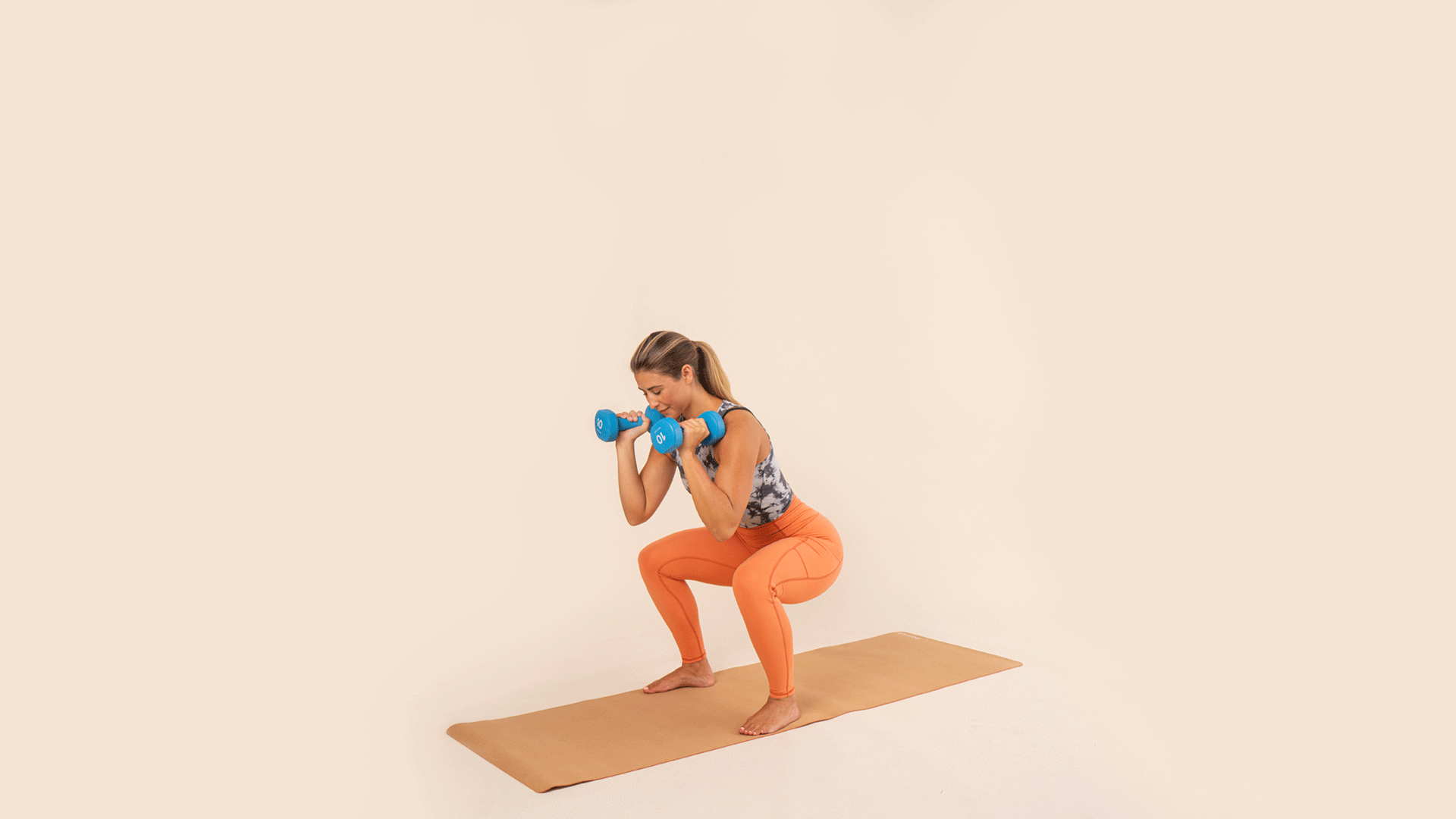
What it is: A combo of a Squat and an Overhead press, this is a total-body movement that builds not just upper- and lower-body strength, but also core strength. You’ll feel the dominant burn in your seat and shoulders.
How to do it: Feel the drive from your heels on up, keeping your feet firmly planted, a soft bend in your knees, and your elbows and ribcage anchored. As your arms go up, resist the urge to follow with your chin; instead, keep your head neutral and your gaze out in front of you.
How to modify: If you feel tension in your neck or traps, stop raising your arms when your elbows are at shoulder height, or reduce the amount of weight you’re using.
B3 Strength Training move: Push Up
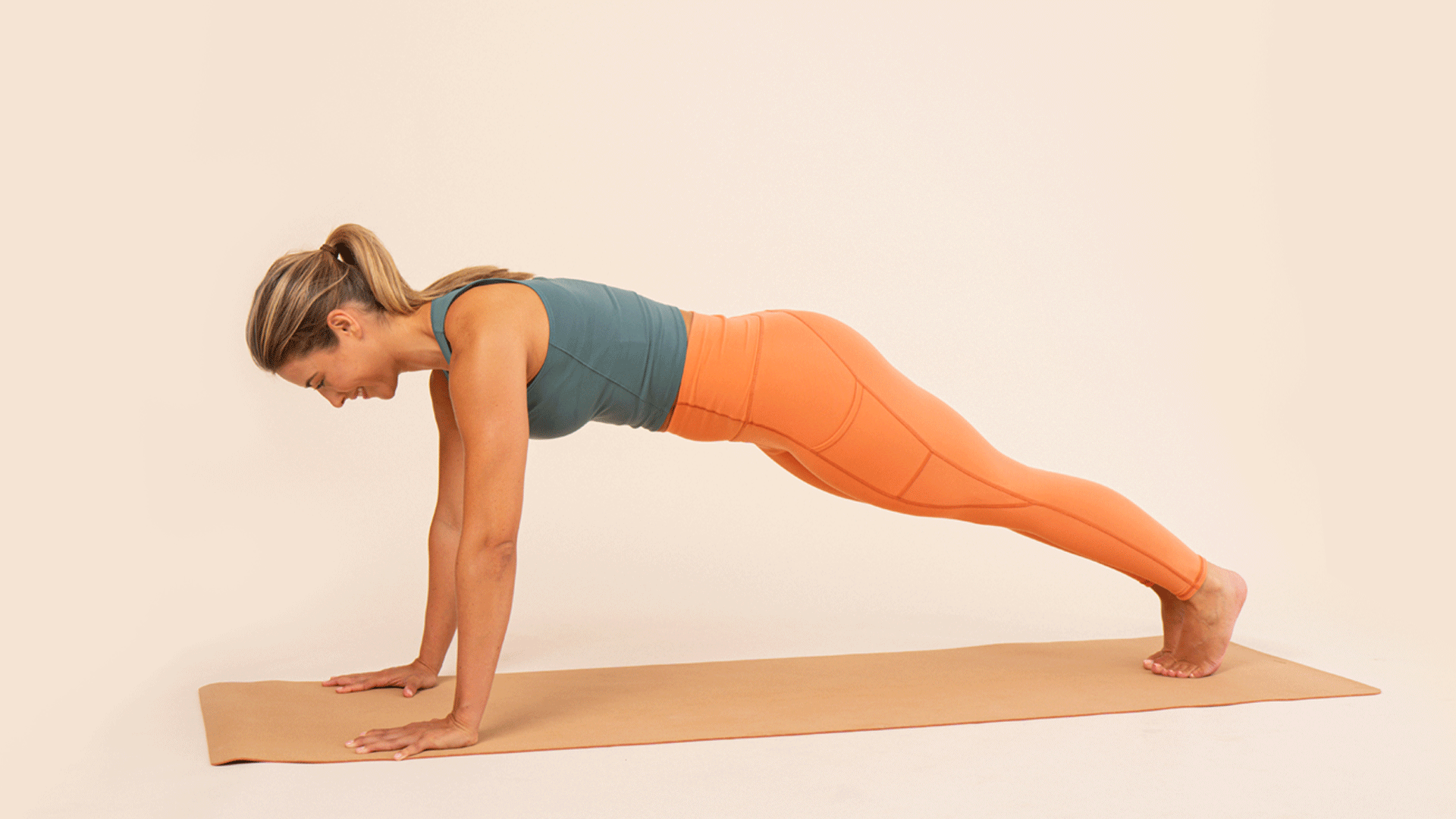
What it is: Love them or hate them, Push Ups are a super-effective way of building and measuring strength. These will strengthen not just your upper body (shoulders, biceps, and triceps) but also your core and your chest—areas where many of us are weak and experience tightness due to lack of use and common lifestyle patterns like slouching over steering wheels and screens.
How to do it: When setting up Push Ups, think of yourself like an arrow from a bird’s-eye view. The crown of your head is the point of the arrow, your elbows are the wings, and your heels are the tail. Maintaining the arrow-head shape in your upper body will recruit both your chest and triceps. Spread your hands and grip the floor as you lower your chest, and then root through the heel of your palm and all ten fingers, squeezing through your center as you lift to the starting position.
How to modify: If you’re not comfortable with the full expression of Push Ups at first, start on your knees or at a waist-high surface and establish proper form before progressing from there.
B3 Strength Training move: Single-Leg RDL (Romanian Dead Lift)
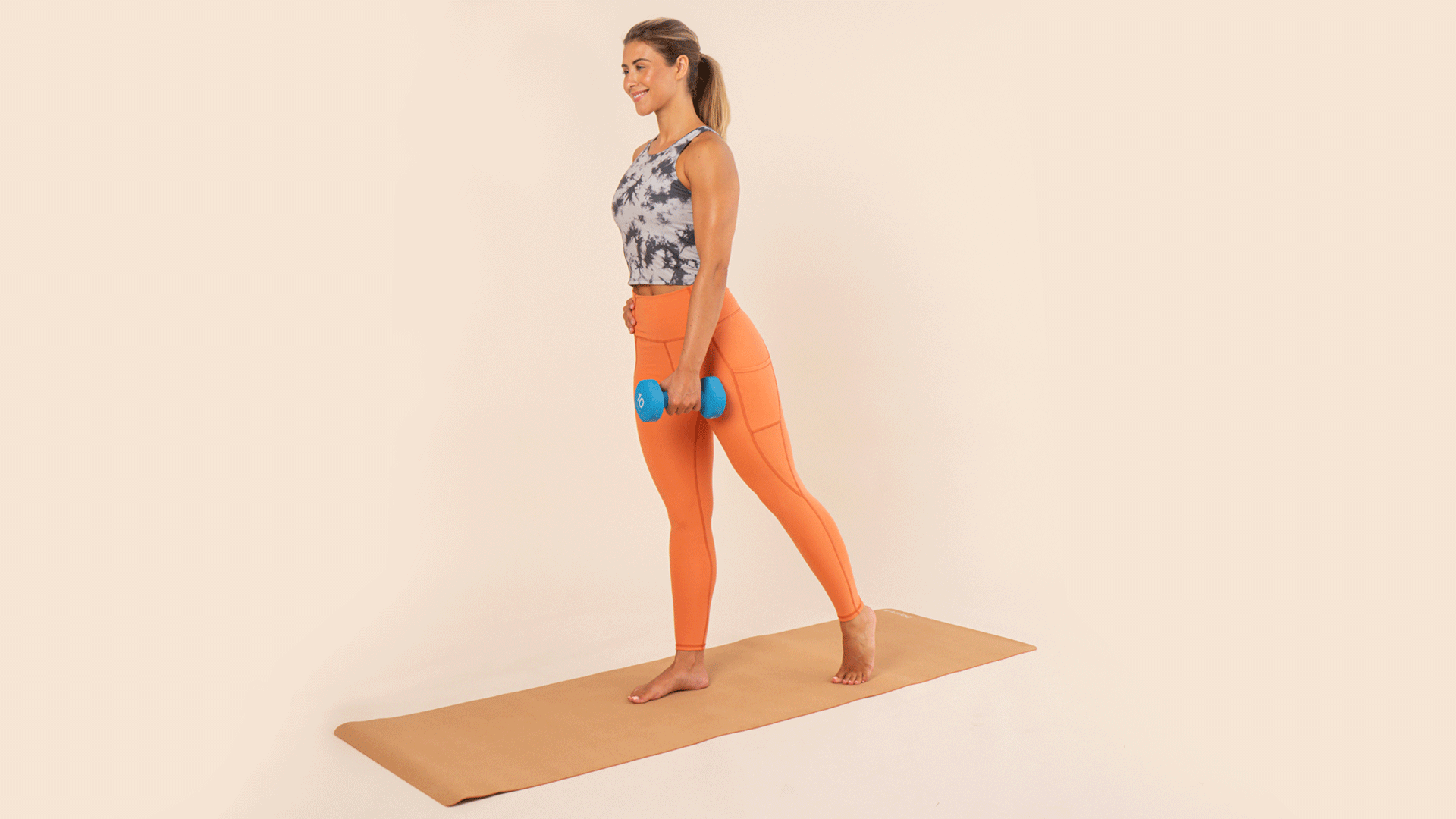
What it is: This move will challenge your balance and support better stability in your hips and pelvis, as well as build strength in the posterior-chain muscles, like your glutes, hamstrings, erector spinae, and lats. Like in all balancing postures, core connection is key.
How to do it: This move is all about controlled stretching in your glutes and hamstrings as you hinge: Stop when you feel resistance or tension, and then contract those same muscles to lift yourself back up. Keep your weights close to your thighs to avoid your shoulders rounding and your chest falling forward, and think about anchoring your shoulder blades down your back and squeezing beneath your armpits the entire time.
How to modify: You have a few modification options for this one: work with just your body weight, keep your back foot grounded, or position yourself on a sturdy surface for balance.
B3 Strength Training move: Renegade Row
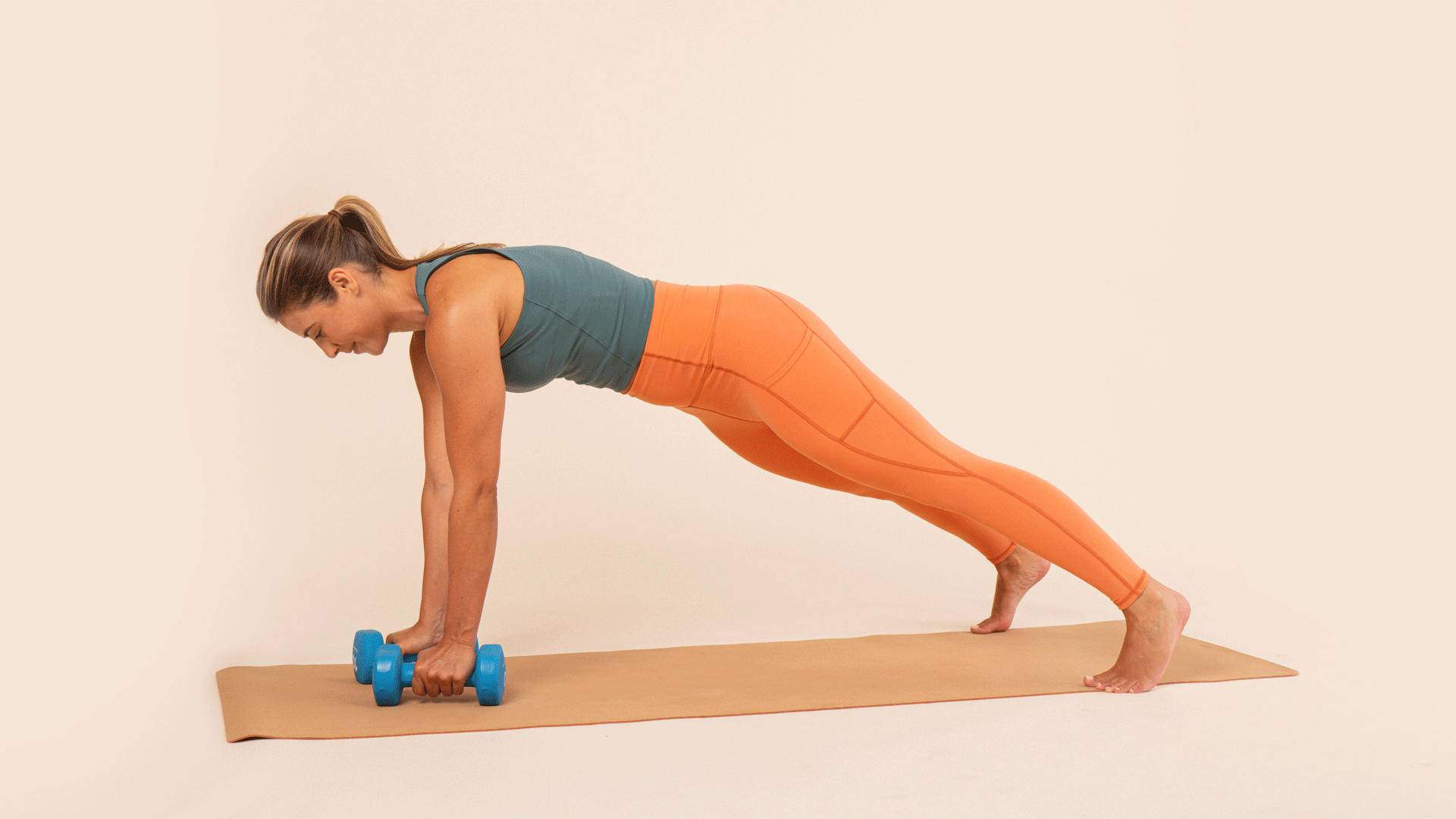
What it is: This one is a challenging core stabilizer with a focus on side-body strength—think obliques and lats!
How to do it: Antirotation is key with the Renegade Row. You’ll be holding a Plank (with the weights in your hands) and adding an alternating row. The goal is to keep your shoulders and pelvis level (so no rocking or swaying from side to side), all while keeping your core engaged and your spine neutral. As you row, pulling your elbow toward your ribcage and squeezing your lat, you’re essentially holding a three-limbed Plank, so focus on balance and control. Take your time! To create a sturdy foundation, it helps to take a slighter wider stance with your feet but keep your hands at shoulder-width.
How to modify: If the row doesn’t feel right, try working on your knees, losing the weights, or doing a shoulder tap instead.
Need props for your next b3 Strength Training class? Find them all in the B3 Shop.
If you’ve tried our b3 Strength Training workout, you probably noticed some new—and challenging!—moves. Below, Franny Loch, Assistant Product Manager, breaks down each move, explaining what it is, how to do it safely and effectively, and how to modify if the original expression of the move doesn’t work for your body. Read on for the details, and schedule your next b3 Strength Training workout to put what you’ve learned to the test!
B3 Strength Training move: The Squat Press

What it is: A combo of a Squat and an Overhead press, this is a total-body movement that builds not just upper- and lower-body strength, but also core strength. You’ll feel the dominant burn in your seat and shoulders.
How to do it: Feel the drive from your heels on up, keeping your feet firmly planted, a soft bend in your knees, and your elbows and ribcage anchored. As your arms go up, resist the urge to follow with your chin; instead, keep your head neutral and your gaze out in front of you.
How to modify: If you feel tension in your neck or traps, stop raising your arms when your elbows are at shoulder height, or reduce the amount of weight you’re using.
B3 Strength Training move: Push Up

What it is: Love them or hate them, Push Ups are a super-effective way of building and measuring strength. These will strengthen not just your upper body (shoulders, biceps, and triceps) but also your core and your chest—areas where many of us are weak and experience tightness due to lack of use and common lifestyle patterns like slouching over steering wheels and screens.
How to do it: When setting up Push Ups, think of yourself like an arrow from a bird’s-eye view. The crown of your head is the point of the arrow, your elbows are the wings, and your heels are the tail. Maintaining the arrow-head shape in your upper body will recruit both your chest and triceps. Spread your hands and grip the floor as you lower your chest, and then root through the heel of your palm and all ten fingers, squeezing through your center as you lift to the starting position.
How to modify: If you’re not comfortable with the full expression of Push Ups at first, start on your knees or at a waist-high surface and establish proper form before progressing from there.
B3 Strength Training move: Single-Leg RDL (Romanian Dead Lift)

What it is: This move will challenge your balance and support better stability in your hips and pelvis, as well as build strength in the posterior-chain muscles, like your glutes, hamstrings, erector spinae, and lats. Like in all balancing postures, core connection is key.
How to do it: This move is all about controlled stretching in your glutes and hamstrings as you hinge: Stop when you feel resistance or tension, and then contract those same muscles to lift yourself back up. Keep your weights close to your thighs to avoid your shoulders rounding and your chest falling forward, and think about anchoring your shoulder blades down your back and squeezing beneath your armpits the entire time.
How to modify: You have a few modification options for this one: work with just your body weight, keep your back foot grounded, or position yourself on a sturdy surface for balance.
B3 Strength Training move: Renegade Row

What it is: This one is a challenging core stabilizer with a focus on side-body strength—think obliques and lats!
How to do it: Antirotation is key with the Renegade Row. You’ll be holding a Plank (with the weights in your hands) and adding an alternating row. The goal is to keep your shoulders and pelvis level (so no rocking or swaying from side to side), all while keeping your core engaged and your spine neutral. As you row, pulling your elbow toward your ribcage and squeezing your lat, you’re essentially holding a three-limbed Plank, so focus on balance and control. Take your time! To create a sturdy foundation, it helps to take a slighter wider stance with your feet but keep your hands at shoulder-width.
How to modify: If the row doesn’t feel right, try working on your knees, losing the weights, or doing a shoulder tap instead.
Need props for your next b3 Strength Training class? Find them all in the B3 Shop.






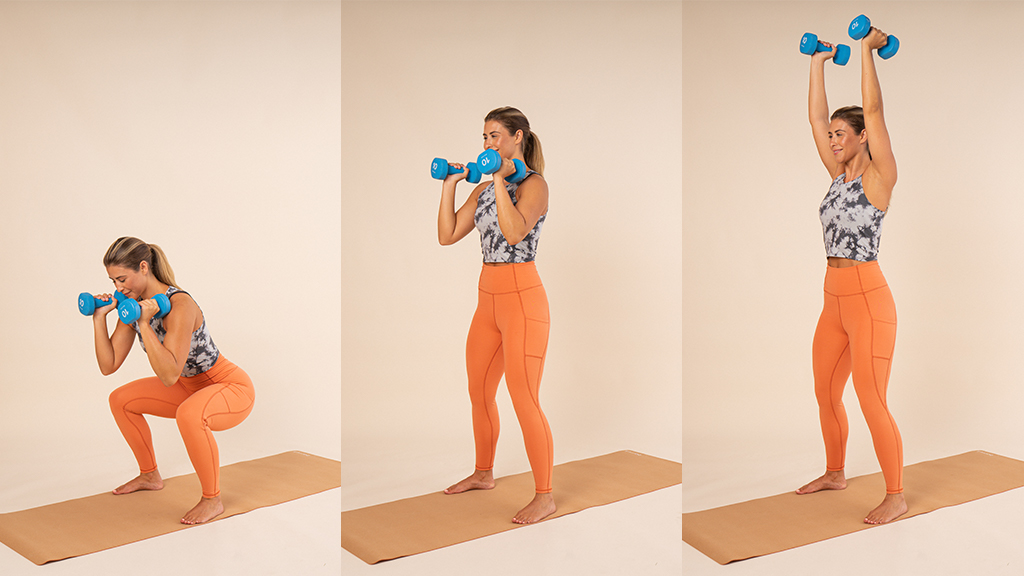







0 people have left a comment. Join the conversation!
View Comments